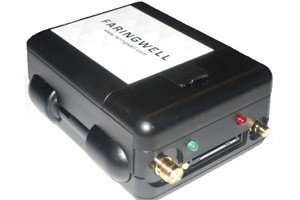Subjects:
- General alarm system
- Different classes
- Immobilizer
- Alarm control unit
- Sirens
- Ultrasonic Sensors
- Radar
- Tilt angle detector
- Vehicle tracking system
General alarm system:
The car alarm ensures the security of the car. The different classes indicate which protections are linked to the system. The higher the class, the more extensive it is. Some insurers also give a discount on the premiums (often only when an official certificate has been issued).
Different classes:
- Class 1: immobilizer
- Class 2: Class 1 + alarm system with siren, ultrasonic sensors or a radar
- Class 3: class 1 + 2 + siren including backup battery, tilt angle detector
- Class 4: Class 1 + 2 + 3 + Vehicle Tracking System
- Class 5: all systems from class 1 to 4.
The difference between class 4 and 5 is that the vehicle tracking system is activated when the alarm goes off. This is not the case with a class 4 system.
All systems mentioned here are described in the following chapters.
Immobilizer:
A class 1 security system has an immobilizer (sometimes called an immobilizer). The key contains a transponder that contains a code. The control unit of the immobilizer The car must recognize (and approve) this code before it can be started.
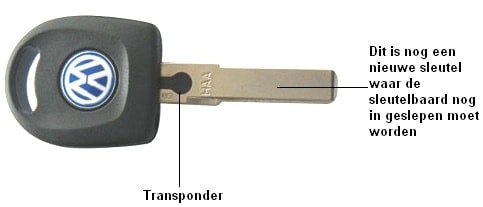
Alarm control device:
The control unit receives signals from the door locks, ultrasonic tilt angle and/or radar sensor. If a signal is received while the alarm is activated, the Control Unit will activate the siren and flashers. The device is switched on as soon as the car is locked with the remote control. Mechanical locking with the key will not activate the system.
- Vehicles without CAN bus: The pre-existing central door locking device transmits the signals from the doors, trunk and hood to the separate alarm control unit. When retrofitting, wires will have to be drawn to connect to the existing wiring. This wiring includes the wiring of the flashing light installation.
- Vehicles with CAN bus: the alarm control unit will be connected to the 2 CAN bus wires of the comfort circuit. After logging in via a readout computer (and thus making it known in the system), no separate wires will have to be drawn as in a car without a CAN bus. The signals go over the entire CAN bus network and also reach the alarm control unit.
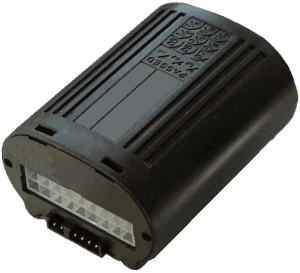
Siren:
When the alarm system (class 2, 4 or 5) is armed and the sensors in the car register that someone is in the car (ultrasonic or radar), a door opens (signal from the door locks), or when the car is jacked up becomes (tilt detection) the alarm control unit activates the siren. Most sirens produce a noise level of around 125dB. Each manufacturer uses its own tone. Some make a squeaking sound, others make a sound with as many different pitches as possible. The siren can be installed in many different places. The most used places are; the wheel arches, the engine compartment or under the paravan plate.
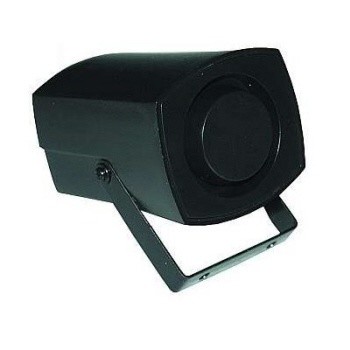
A siren of a class 3 alarm system has an emergency power battery. If the alarm goes off and the battery terminal is removed, the emergency battery will continue to power the siren. The siren continues to go off for a few minutes. It is strongly advised to replace this backup battery every few years (consult the manufacturer for details). Nowadays, a malfunction is often stored in the memory when the battery threatens to run out.
Ultrasonic Sensors:
The ultrasonic sensors monitor the interior for movements. Ultrasonic sensors, as the name suggests, work with ultrasonic waves (just like the Park Distance Control sensors). The sensors transmit and receive the ultrasonic waves. The time between sending and receiving is measured. When arming the alarm, these sensors calibrate the system the first minute after arming. The distance between the sensors and the objects in the passenger compartment (eg the seats) is stored in the system. As soon as a movement takes place in the car (for example if a window is smashed), the ultrasonic waves collide with this object or person and affect the time between sending and receiving. The alarm system control unit will activate the siren immediately.
The ultrasonic sensors not only register movements of objects, but they are also sensitive to vibrations. If the car is parked with the windows closed, the air in the interior will not move either. As soon as the windows are open, air flows through the car and the sensors will register this. The alarm will then go off. If the sensitivity is set very high, loud noise outside the car can also trigger the alarm. This noise can be caused by fireworks or thunder. This is because sound is purely a vibration in the air. As soon as the sound is loud enough and this vibration can reach the interior of the car, the ultrasonic sensors will register it. Because the sensors are sensitive to sound vibrations, they are not suitable for convertibles. If the roof was open and the alarm was armed, it would go off constantly. That is why there are no ultrasonic sensors built into convertibles, but a radar has been installed.
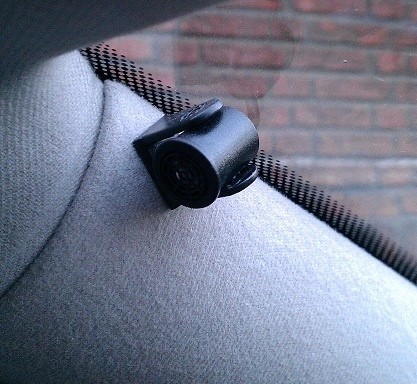
Radar:
A (different type of) radar can be used not only for driving assistance, but also for the alarm system. The radar of the alarm system is concealed as centrally as possible in the interior (see image below). The radar transmits radar signals that are independent of sound waves, vibrations and movements of fast, small objects. That is why a radar is suitable for a convertible, and a system with ultrasonic sensors is not. Compared to the ultrasonic sensor, the radar is very slow and will only trigger the alarm a few seconds after a person has sat in the car. This system will also have to calibrate itself after switching on the alarm. Also, the radar will not be limited to just the interior of the car. The signals from the radar go right through the metal and plastic of the car (and weaken it because of that) but will even register movements that occur right next to the car. For example, it is possible to adjust the radar in such a way that when someone walks (or touches) too close to the car, the alarm is activated.

Tilt angle detector:
The inclination angle detector is mounted in the middle of the interior, often in the center console of a class 3 alarm system. This sensor measures the position in the car, because a ball takes a certain position. When the alarm is switched on, the position of the movable ball is measured. Once the system has calibrated after approximately one minute, the position is monitored.
As soon as the car takes on a different position, for example because it is jacked up, the ball moves even further in the sensor. This movement is recognized and the alarm is activated. For example, the car can be jacked up to remove the wheels or tow it away. It does not matter that the car leans backwards because there is a lot of luggage in the trunk, or that there is a caravan behind it. When arming the alarm, the system is calibrated to the current position. If the caravan is disconnected in the meantime (and the rear is raised), the alarm will also go off.

Vehicle tracking system:
With an alarm class 4 or 5, a vehicle tracking system is installed. This is a separate device that is hidden as far as possible in the interior. It should take as long as possible for malicious person to find this device. As soon as the alarm is activated, this device will transmit the GPS coordinates every few seconds via a GSM signal to the monitoring station. The control room (of the alarm system) will immediately warn the police, who will then go there. The tracking system will continue to send the GPS coordinates until the alarm system is turned off. Also in this tracking system is an emergency battery that lasts about 24 hours after disconnecting the battery from the car.
